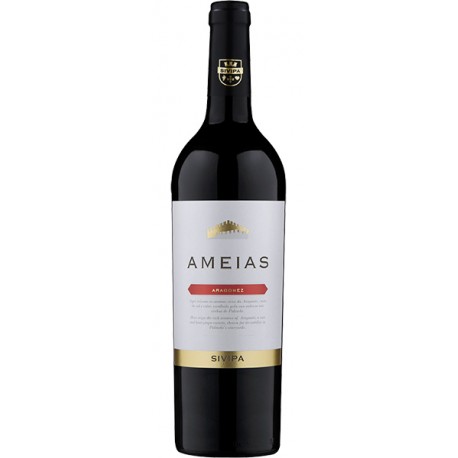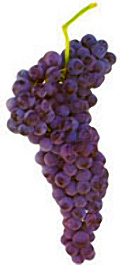 View larger
View larger
Red Wine Ameias Aragones, 2013
SV00706
New product
Regional Península de Setúbal red wine with intense ruby color and confit red fruit aromas, it is a soft, rounded and balanced wine.
One special red wine made with 100% grapes from the variety Aragones.
Enjoy it with full-fat cheese, red meat and game dishes.
More info
Monovarietal red wine Aragones
Grape Varieties: Aragones
Soil/Terroir: Sandy soil
Average Age of Vines: 10 years
Media Production: 7 hl/ha
WINEMAKING: Fermentation stainless still vats at an average temperature of 25ºC.
Long maceration in order to extract maximum color pigments and tannins.
AGEING: 4 months in American heavily toasted oak barrels.
ANALYSIS
Alcohol: 14 % VOL
Total acidity: 4.5 g/l
Total sugars: 2 G/L
SERVING SUGGESTIONS: Should be served at a temperature of 16ºc with full-fat cheese, red meat and game.
Organoleptic Characterization
Visual Appearance: intense ruby color.
Appearance olfactory: confit red fruit aromas.
Appearance taste: soft, rounded and balanced wine.
Awards:
- Commended – IWC 2014
- Bronze Tambuladeira , Portuguese Sommmeliers Association 2014
- Gold –Vinalies Internationales 2013
- Gold Concurso de Vinhos da Península de Setúbal 2011
- Bronze - Challenge International du Vin, 2010
- Silver C Nacional de Vinhos engarrafados, Santarém 2011
- Silver Selezione del Sindaco 2011
The Grapes
 Aragones
Aragones
One of the noblest grape varietals of the Iberian Peninsula, Aragones is renowned on both sides of the border, recognized as Tempranillo in Spain, and in Portugal as both Aragonez and Tinta Roriz in the north.
It is an early maturing variety, vigorous and productive, and easily adapting to different climates and soils but it prefers hot, dry climates with sandy or clay-limestone soils best.
In the Setubal Peninsula it occupies about two-hundred and seventy hectares and its maturation occurs, as a general rule, one week before the Castelao grape varietal.
If its force is controlled, it produces full-bodied wines that are very elegant and aromatic. The aromas of this varietal exude plum, dried plum, red berries, spices and sometimes licorice, becoming more complex as it evolves.
Although Aragones is often used in blends to harmonize with other varieties like Castelao, Touriga Nacional, Trincadeira, Touriga Franca and Alicante Bouschet, it's also produced as a single–varietal wine, which has been met with great success and has become a hallmark for some of the producers in the region.
The Region
The Setubal Peninsula is a unique region, whose wines are as generous and balanced as the region that sees them born. Mother Nature was magnanimous and refined: from with the two peninsulas, “drawn” by the two largest estuaries in Portugal, was born a region rich in biodiversity and fish and shellfish with both natural and protected areas.
The framing by the Atlantic Ocean and the Tagus and Sado River estuaries, combined with a deep Mediterranean influence and geological formation provide a unique set of characteristics for wine production.
The Setubal Peninsula also has one of the oldest denominations in Portugal - the region of Moscatel de Setubal, whose demarcation was begun in 1907 and completed and confirmed in 1908.
The Setubal DO (Denomination of Origin) region is geographically bounded by the municipalities of Setubal, Palmela, Montijo and the village of Castelo in the municipality of Sesimbra. This "terroir", which is the cradle of the Moscatel de Setubal is unique: the joint annual rainfall of 550-750 milliliters and the 2,200 hours of sunshine poured over the sandy and clay – limestone soils is all seasoned with a handful of Atlantic breeze.





